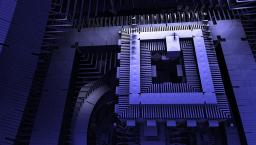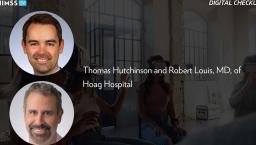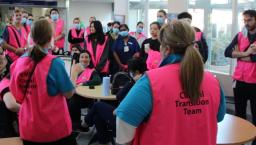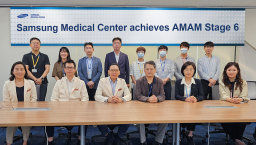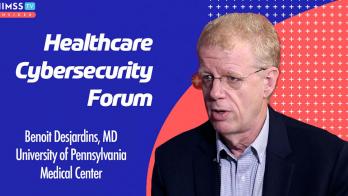Quantum computing holds huge promise

A Canadian computing company called D-Wave Systems has been in the news recently, since it was announced this spring that NASA, Google and the Universities Space Research Association (a nonprofit wing of National Academy of Sciences, comprising universities with graduate programs in space science) have contracted to use its technology.
D-Wave bills itself as the first commercial quantum computing firm. Its computer, the D-Wave Two, will be put to work at the Quantum Artificial Intelligence Lab – jointly launched by NASA, Google and the USRA – to advance machine learning and tackle some vexing computer science problems on earth and in the cosmos: everything from speech recognition to the search for exoplanets.
The deal represents a "fundamentally different approach to computing for both industry and government," said Steve Conway, IDC research vice president for high performance computing, in a written statement. "Organizations that depend on leading-edge technology would do well to begin exploring the possibilities for quantum computing."
So what could quantum computing do for healthcare? And, more to the point, what the heck is quantum computing?
As most people know, most computers are binary – they do their computing on the basis of bits that can be either of two things: a zero or one. That's the same, effectively, as yes or no (or on or off).
Quantum computing, which is still a relatively new phenomenon, practically speaking, moves past that binary system. These computers operate via what are called quantum bits – or qubits – that can exist in what's referred to as "superposition": They can be ones or zeroes, or they can be in multiple states at once.
While a typical computer can tackle one challenge at a time, quantum machines are able to blaze through lots of different computations at once. The upshot – glossing over lots of complex physics – is that qubits make for speed and horsepower that far outpace even the most advanced of conventional supercomputers.
"When you string several qubits together, instead of operating on one bit at a time, you can operate on the superposition of exponentially many bits at the same time," Colin Williams, director of business development at D-Wave Systems, tells Healthcare IT News. "There's a fundamentally different mechanism available because you're harnessing different physical principle."
So far, D-Wave has been able to double the amount of quantum bits every year, and its current Vesuvius processor runs at a whopping 512 qubits.
"We've been able to have a fairly rapid design fabrication and test cycle," says Williams. "That's allowed us to knock down some of the tallest engineering problems pretty quickly."
Still, there are many more avenues left to conquer. Earlier this year, before the NASA/Google partnership, D-Wave sold a computer to Lockheed Martin, which plans to use it to test out jet aircraft designs and gauge the reliability of satellite systems, according to the New York Times. (The paper notes that, in tests this past fall, "an independent researcher found that for some types of problems the quantum computer was 3,600 times faster than traditional supercomputers.")
Beyond aerospace, Williams says healthcare is "one the areas where we definitely want to grow. I think it's a good fit for the hardware as well."
Indeed, medical experts have been anticipating the benefits quantum computing could have on healthcare for some time. In 2011, University of Pittsburgh researcher Gurudev Dutt and his colleagues published a paper looking forward to what qubit-based machines could mean for radiology.
Consider a novel type of magnetic resonance imaging, for instance: an MRI "on single molecules or groups of molecules inside cells instead of the entire body," wrote Dutt. "Traditional MRI techniques don’t work well with such small volumes, so an instrument must be built to accommodate such high-precision work."
The challenge for Pitt researchers exists in the mechanics of that instrument, meant to make sensitive measurements of force, mass, and electric and magnetic fields but limited by the fact that physicists can only detect a narrow range of fields from molecules near the sensor’s resonant frequency.
"It can be done," wrote Dutt, "But it requires very sophisticated image processing and other techniques to understand what one is imaging. Essentially, one must use software to fix the limitations of hardware, and the scans take longer and are harder to interpret."
So Dutt and his colleagues experimented with quantum computing to circumvent the hardware limitation to view the entire magnetic field. It's helped them make progress he wrote, that soon could mean "an immediate impact on our understanding of these molecules, materials, or living cells and potentially allow us to create better technologies."
In another study from 2011, Donald F. Parsons, a researcher at the Wadsworth Center, Biggs Laboratory, New York State Department of Health, highlighted another medical use for quantum computing.
"In the last few years, several kinds of biomedical and medical data have greatly increased in volume and scope," he wrote. "DNA sequencing improvements have reduced the cost, and increased the throughput, of genome sequencing by more than three orders of magnitude."
As such, "There is now an urgent need for access to large-scale, parallel computing in order to bring this new information into clinical use."
Luckily, he added, large-scale quantum computing is fast getting up and running. "Working small-scale quantum computers have been demonstrated using up to five qubits. Large-scale QCs need hundreds, or thousands of qubits."
Without their "massive parallel-computing capability," Parsons wrote, "new DNA sequencing data, the learning of the specific activities of the folded conformations of proteins, and the search for new drugs by docking algorithms, are being held back from full clinical application."
For his part, Williams sees big things on the horizon with regard to machine learning and artificial intelligence – right in the sweet spot of the problems NASA and Google are trying to solve, and also increasingly in vogue in healthcare.
"We really are at the very beginning of this process but from what we've seen so far, things look really good in terms of machine learning applications," said Williams. "More and more data is available, and to truly analyze that data and do something with it, you need some machine learning techniques."
In the healthcare industry, he says, "These kinds of machine learning tools have tremendous potential. One thing you might want to do for example is to train a system on a set of radiographs – some of which contain tumors and some of which don't. You can train the system to classify the difference."
Personalized medicine, too, stands to make big strides. Quantum computers could suss out "something about a person's genome that makes them a responder or non-responder to a particular drug," says Williams.
"I really do think there's an enormous potential impact on the healthcare system," he adds. "And I think we'll see some results begin to emerge in the next few years. The doors are wide open."
[See also: Watson heads to medical school]
[See also: Supercomputers bring research to bedside]










